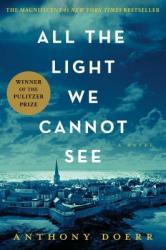If All the Light We Cannot See were a movie, I would consider it “Oscar bait.” Set during the most romantic of World Wars: check. Main character with disability: check. Drama, tragedy, and suspense: check, check, and check. It’s then no wonder that All the Light We Cannot See ended up winning a Pulitzer. Sure, it’s filled with plenty of the “award” tropes that we tend to see repeated over and over again—but it works. What helps this book stand out from the rest of the books and movies that try too hard to earn awards is twofold: its characters and its plot.
Before I get too far into my praise for this book, I have to mention that the narrator for the audiobook version seemed to mispronounce a few words early on, which threw me for a loop and made me wonder if I’ve been mispronouncing them myself. Similarly, it was a little challenging to track the timeframes for some of the subplots, but the impact of the book was still the same. The author was able to paint a vivid set of lives set on opposite sides of a global conflict. From the blind French girl forced to survive on her own to the prodigious German boy with a penchant for radios and STEM, their internal and external conflicts were prime examples of gripping and engaging storytelling.
While there didn’t seem to be one primary driving plot in this book, the addition of the handful of subplots worked in concert to create a gem of a story (har har). These subplots were natural to the characters that embodied them, which helped to produce an amount of realism that held everything together. Everything just made sense, and even the semi-tragic ending was a satisfying end that left no subplot or loose end untied.
A beautiful piece of prose worthy of its Pulitzer, I give All the Light We Cannot See 5.0 stars out of 5.
